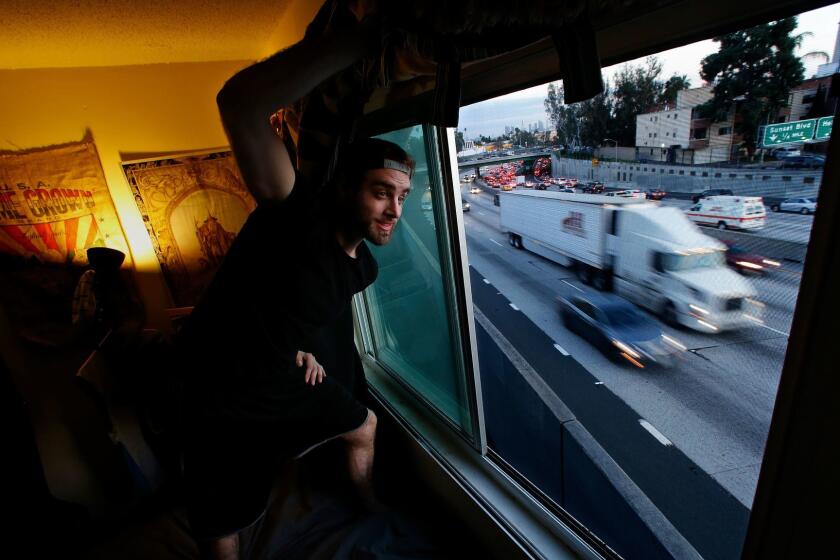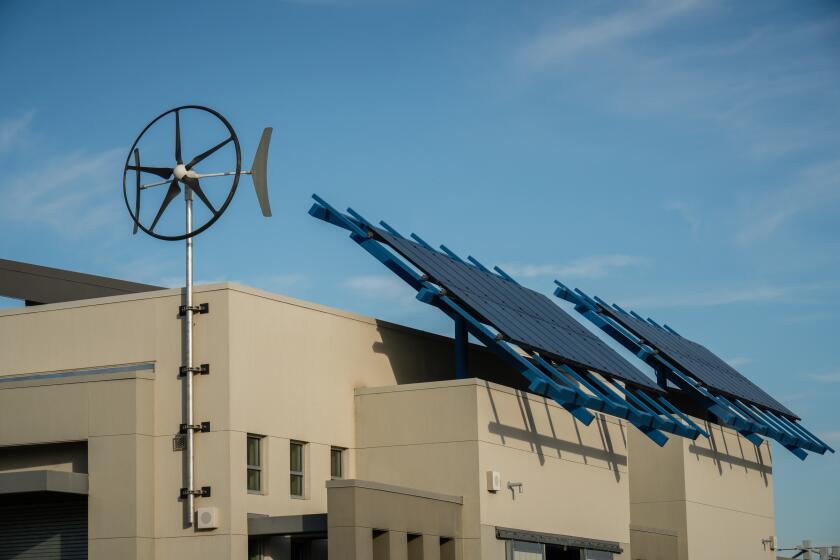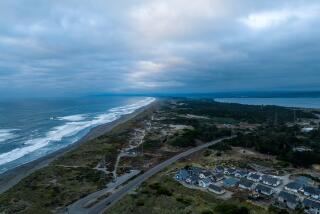L.A. residents who drive less are exposed to more air pollution, study finds

- Share via
Despite the conventional wisdom, not everybody drives all the time in Los Angeles. Those who don’t, it turns out, pay more of a price in terms of the air they breathe than major car commuters, according to a new study.
Researchers from the USC Sol Price School of Public Policy concluded that residents of wealthier, whiter areas exported air pollution to the neighborhoods around their commutes.
“There’s this consistent injustice in air pollution exposure,” said Geoff Boeing, an assistant professor at the school and co-author of the study.
Past studies have established that “there’s a statistically significant difference in exposure levels, particularly in home locations, between white groups and nonwhite groups,” said Boeing, adding that those exposed most to harmful air are “usually Black and Hispanic groups.”
If anyone knows where to find refuge from air pollution near Los Angeles freeways, it’s Suzanne Paulson.
Given what he called a “foundational injustice,” Boeing said he and his co-authors sought to answer a related question about air pollution: Are you being exposed to more than you’re producing?
What they found was that when controlling for every other variable possible, residents who drove more were exposed to less air pollution, and vice versa.
They also noted a distinct racial effect.
“Even when you’re controlling for everything else, a whiter tract is going to be exposed to less air pollution,” Boeing said, referring to census tracts, geographical areas of about 4,000 people.
Boeing used the examples of Bel Air and Baldwin Hills to illustrate his point. Both are relatively wealthy areas, but the whiter area — Bel Air — is much farther from freeway infrastructure, increasing drive times for residents while decreasing their exposure to air pollution.
Campuses are prime spots for solar power. Teachers can also prepare kids for a climate-friendly future, a new report argues.
As a Bel Air resident, “you have to drive more to access your daily needs, but you’re farther from where pollution is generated,” he said.
On the other side of the equation, he pointed to Pico-Union and Boyle Heights, where less wealthy people are more “dependent on public transit or walking or biking” — therefore likely to generate less air pollution while being “surrounded on all sides by freeways.”
Racial discrimination around road building and use is not accidental, experts say. Interstates 5, 10 and 110 were built over Black and Latino neighborhoods, while freeways proposed to cross whiter, richer areas in Reseda, Laurel Canyon and Beverly Hills were stopped.
Boeing and his team also ran commute simulations to model which routes drivers from various areas take to their jobs.
Southern California has long struggled to meet federal air pollution standards. Now, the EPA wants to impose even higher requirements for particulate matter.
“Drivers from whiter tracts tended to traverse tracts that were much less white than their home tracts,” he said, noting that the models showed “a lot of excess driving from whiter communities across Black and brown communities in the L.A. basin.”
The reverse situation, in which people of color commute through whiter communities, was much less common, he said.
Times staff writers Liam Dillon and Ben Poston contributed to this report.
More to Read
Sign up for Essential California
The most important California stories and recommendations in your inbox every morning.
You may occasionally receive promotional content from the Los Angeles Times.

















